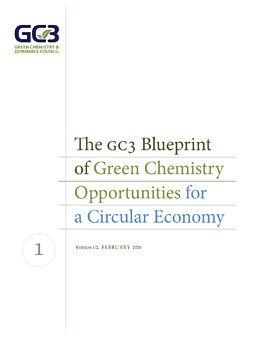Peer Learning Communities
The Change Chemistry Peer Learning Communities (PLC) are the “home base” for all members. The PLCs meet regularly to learn from each other, help build alignment across the supply chain around chemical innovation needs, and identify projects of interest. Participants include brands, retailers, formulators, chemical manufacturers, consultants, and other business groups. Like all Change Chemistry initiatives, PLC meetings are held under the Chatham House Rule. Members are encouraged to share best practices, tools, and successes with their peers and identify barriers impeding scale and adoption of sustainable chemistry.
There is no limit to the number of representatives from a company that can participate in a Peer Learning Community. If a group isn't the right fit for you, share it with a colleague!
To learn more about each group, click on the headers below.
Retailer Leadership Council (RLC)
The Retailer Leadership council drives the promotion of safer chemicals, materials, and products with the collective power of our retailer members. The group convenes bi-monthly to share their best practices, challenges, and needs around key sustainable chemistry topic areas, such as certifications, recycling, and supply chain management. The RLC also collaborates on retailer specific projects to develop recommendations and priorities for advancing sustainable chemistry.
For more information, contact Asli Tamer Vestlund, European Program Lead.
Startup Network
The Startup Network connects innovators with green and sustainable solutions with members of the chemical value chain. Startups develop connections to strategic partners, and larger Change Chemistry members identify new technologies that could meet their needs.
Each year, Change Chemistry invites the members of our Startup Cohort to present about their material, product, or technology to investors, brands, and manufacturers at the Innovators Roundtable.
For more information, contact Rui Resendes, Director of Partnerships and Business Development.
Supporting Champions
To accelerate the adoption of sustainable chemistry, the benefit it has to business health, resiliency, and reputation must be understood throughout an organization. Our efforts support individual champions within organizations through peer learning and expert led trainings on how sustainable chemistry benefits their job function and communicating this value across an organization.
For more information, contact Jenny MacKellar, Program Director.
Peer Learning Community Outputs
Circular Economy Project
Over the last decade, the concept of a “circular economy” has gained considerable momentum. A circular economy is based on the principles of natural systems and is regenerative and restorative by design. Through research and stakeholder discussion, the Change Chemistry Circular Economy Program aimed to highlight the synergies between green chemistry and the circular economy to enable and optimize the adoption of both.
Retailers, brands, formulators, and chemical manufacturers are increasingly challenged to achieve multiple sustainability objectives, such as those outlined in the United Nations (UN) Sustainable Development Goals (SDGs), including carbon reduction and circularity. There are increasing policy, marketplace, and investor demands for more circular materials and products. A number of recent analyses and policy proposals for implementing circular economy approaches highlight the need for safer, more sustainable chemicals as a key prerequisite. Change Chemistry has been at the forefront of these conversations, exploring the connections between green chemistry and the circular economy for the last several years. More recently, Change Chemistry developed a report The GC3 Blueprint of Green Chemistry Opportunities for a Circular Economy (The Blueprint) discussing how green chemistry can support and amplify the circular economy goals, as developed by the Ellen MacArthur Foundation, to help companies throughout the value chain harness the power of green chemistry to meet the growing need for a more sustainable economy.
The Blueprint framed discussions for a new forum in 2021, the Change Chemistry Circular Economy discussion group. The group was dedicated to exploring the connection between green chemistry and the circular economy, and met monthly to share best practices, challenges, and lessons learned from companies on their journey towards adopting green chemistry and a circular economy.
Sustainable Chemistry Definition

One of the greatest challenges in sustainable chemistry adoption and policy work has been creating a common definition to help align efforts across different constituencies. Change Chemistry’s definition of sustainable chemistry was developed through an international multi-stakeholder group process. This consensus process defined sustainable chemistry as the design of chemicals and chemical products that benefit society without harming health and the environment.
As defined, sustainable chemistry includes the design, development, demonstration, commercialization, and/or use of chemicals and materials that:
-
-
-
-
-
-
- Are less toxic to human health & the environment from extraction through disposal;
- Have lower energy consumption & related emissions;
- Have reduced natural resource impacts and
- Have reduced waste.
-
-
-
-
-
Change Chemistry's consensus definition of sustainable chemistry supports innovation, encompasses research & development, and promotes commercialization and adoption.
Check out more Peer Learning Community outputs on the Retailer Leadership Council page.

